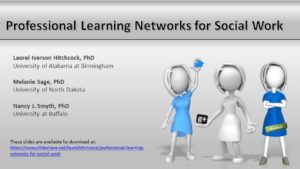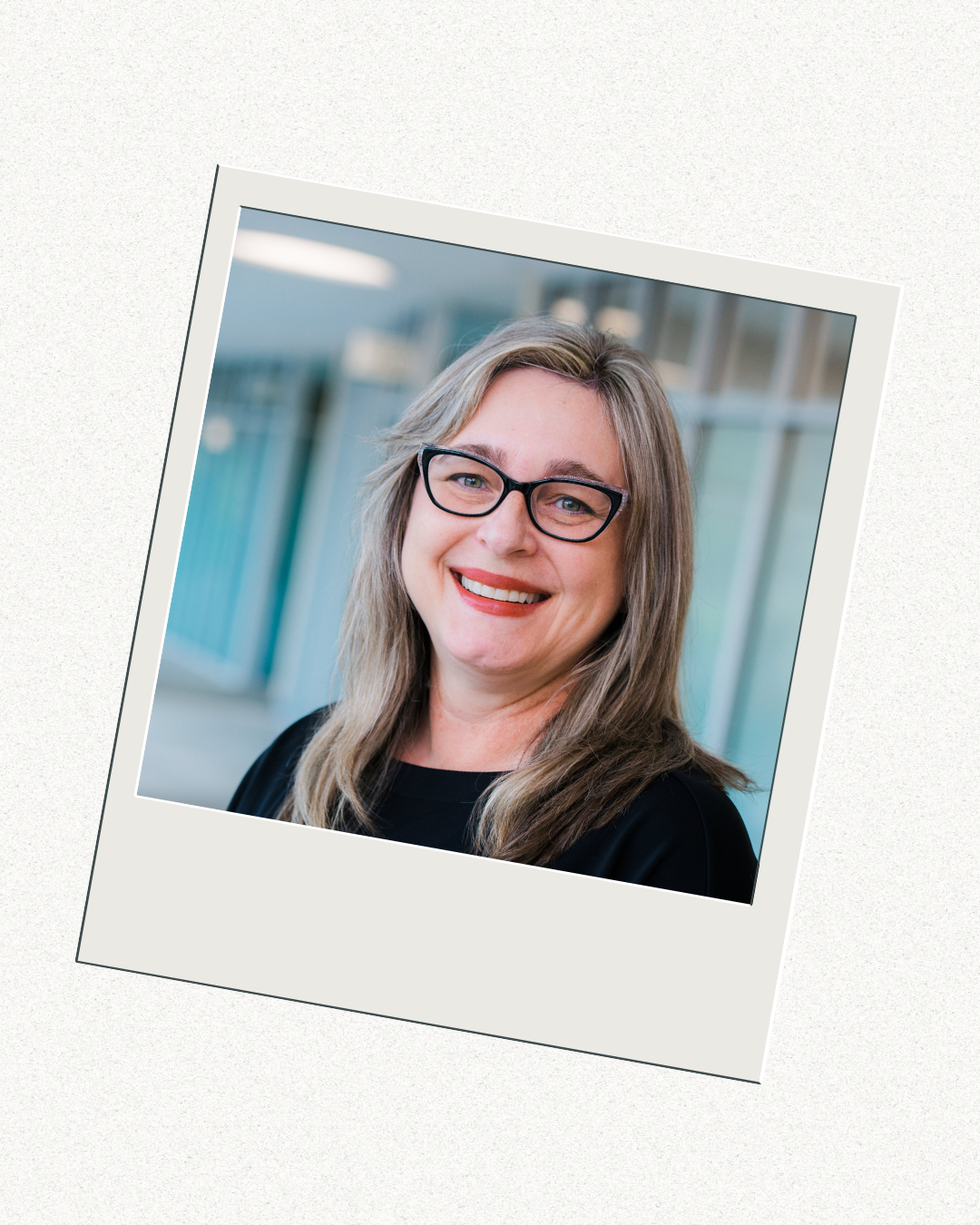Day Two of #SWDE2017 – Professional Learning Networks for Social Work
 On April 13th, Melanie Sage, Nancy J. Smyth and I presented at the third annual Social Work Distance Education Conference sponsored by Our Lady of the Lake University’s Worden School of Social Service.
On April 13th, Melanie Sage, Nancy J. Smyth and I presented at the third annual Social Work Distance Education Conference sponsored by Our Lady of the Lake University’s Worden School of Social Service.
Our workshop informed participants about the mechanics as well as the advantages and disadvantages of professional learning networks (PLN), both as a scholar and in the classroom. A professional learning network (also known as a personalized learning network) includes technology-based tools and processes used by a social worker to stay up-to-date and share information about current news, practice knowledge, and the latest research findings. Participants learned how to establish and grow their own PLN, integrate PLNs into a classroom or curriculum, and appreciate how the theory of Connectivism (Siemens, 2005) informs the practice of PLNs.
You can access a copy of the slides here: https://www.slideshare.net/laurelhitchcock/professional-learning-networks-for-social-work.
A copy of the Professional Learning Network (PLN) Worksheet shared during the session is available here: https://drive.google.com/file/d/0ByR_E-iQH7PdT2t1WV9YYnlZV00/view?usp=sharing
Here is our abstract with the learning objectives:
By the end of the session, participants will:
1. Describe what a Professional Learning Network (PLN) is and why to use one
2. Demonstrate how to establish their own PLN and how to incorporate
3. Appreciate the role of theory in adopting technology tools for social work practice
Professional learning networks (PLN) include tech-based tools and processes used by social workers to stay current and share information about news, practice knowledge and research findings. Participants will learn how to establish their own PLN, integrate PLNs into a classroom, and appreciate how theory informs the practice of PLNs.
Competent and ethical social work practice requires practitioners, educators and students to stay up-to-date and share information about current news, practice knowledge and the latest research findings (Council on Social Work Education, 2015; National Association of Social Workers, 2008). While there are many strategies, one robust strategy is the professional learning network (PLN). Simply stated, PLNs employ, within an online environment, the same strategy that social work professionals have used for centuries: connect to people who share interests and with whom they can share useful information. PLNs are a well-established practice in the field of education (Richardson & Manacebelli, 2011).
Today, a PLN exists when a social worker uses social media to collect information related to professional interests, shares this information with others, and also collaborates with others on projects (Richardson & Manacebelli, 2011). For example, a social worker’s PLN might include the use of email alerts from online newspapers, blogs and scholarly journals to receive updates about child welfare research, and then shares this information with employees, colleagues or students via Twitter or a curated list on Diigo, a social bookmarking tool.
One advantage of an online PLN is that social workers can access it almost anytime, and it draws from a variety of sources such as blogs, e-letters, interest communities (e.g., Facebook or LinkedIn groups, Google+ communities, Twitter chats), listservs, and various other social media platforms (Hitchcock, 2015; Michaeli, 2015). Also, given the diverse sources and opportunities with an online PLN, social workers can use their networks to quickly and effectively access information and resources when working with complex situations, clients with rare conditions, or in isolated practice settings (Chen, Rittner, Manning, & Crofford, 2015; Smyth, 2016). Today’s social work educator needs to create and maintain their own PLN while also helping students to develop their own PLNs.
This workshop will provide an introduction to PLNs for social work educators wanting to create their own network or who want to incorporate PLNs into their classroom or across a curriculum. First, social work educators who attend this session will learn the basics of establishing a PLN that is grounded in digital literacy and the learning theories of Connectivism, Connected Learning & Peeragogy (Belshaw, 2014; Corneli, Danoff, Ricaurte, Pierce, & Macdonald, 2016; Ito et al., 2013; Seimens, 2005). The presenters will share examples from their own PLNs as well as other disciplines such as teaching, medicine, and counseling. Second, the presenters will share example assignments and learning activities for social work courses that promote student understanding and use of personal learning networks as a tool for social work practice. Strategies for modeling PLNs across multiple courses will be discussed and numerous resources will be shared.
References:
Chen, Y.-L., Rittner, B., Manning, A., & Crofford, R. (2015). Early Onset Schizophrenia and School Social Work. Journal of Social Work Practice, 29(3), 271–286. https://doi.org/10.1080/02650533.2015.1014328
Corneli, J., Danoff, C. J., Ricaurte, P., Pierce, C., & Macdonald, L. S. (2016). The Peeragogy Handbook. Retrieved December 6, 2016, from http://peeragogy.org
Council on Social Work Education. (2015). Educational Policy and Accreditation Standards. Washington, DC: Author.
Hitchcock, L. (2015, July 1). Personal Learning Networks for Social Workers. Retrieved from https://laureliversonhitchcock.org/2015/07/01/personal-learning-networks-for-social- workers/
Ito, M., Gutiérrez, K., Livingstone, S., Penuel, B., Rhodes, J., Salen, K., … Watkins, S. C. (2013). Connected learning: an agenda for research and design. Irvine, CA, USA: Digital Media and Learning Research Hub. Retrieved from http://dmlhub.net/
Mehta, N., & Flickinger, T. (2014). The Times They Are A-Changin’: Academia, Social Media and the JGIM Twitter Journal Club. Journal of General Internal Medicine, 29(10), 1317– 1318. https://doi.org/10.1007/s11606-014-2976-9
Michaeli, D. (2015, November 15). Personal Learning Network Twitter Cheat Sheet. Retrieved July 29, 2016, from http://www.socialwork.career/2015/11/personal-learning-network-twitter-cheat-sheet.html
National Association of Social Workers. (2008). Code of Ethics of the National Association of Social Workers. Retrieved from https://www.socialworkers.org/pubs/code/code.asp
Richardson, W., & Mancabelli, R. (2012). Personal Learning Networks: Using the Power of Connections to Transform Education (3rd edition). Bloomington, IN: Solution Tree Press.
Siemens, G. (2005). Connectivism: A learning theory for the digital age. International Journal of Instructional Technology and Distance Learning, 2(1). Retrieved from http://www.itdl.org/Journal/Jan_05/article01.htm
Smyth, N. J. (2016, October 14). Online Connections for Professional Learning. Retrieved from https://socialworksynergy.org/author/njsmyth/
How to cite this post:
Hitchcock, L. I., Sage, M., & Smyth, N. J. (2017, April 15). Day Two of #SWDE2017 – Professional Learning Networks for Social Work. Retrieved from https://laureliversonhitchcock.org/2017/04/15/day-two-of-swde2017-professional-learning-networks-for-social-work/


